Scaphoid Fracture Surgery - Expectations and Outlook
Oct 30, 2016 By justin bauer
I broke my scaphoid bone from mountain biking last February in 2015 and it caused me to research the topic relentlessly. I found that there was not a bunch of information online regarding people's experiences so I wanted to post a somewhat detailed summary of what I went through. I found some great scientific journals on the topic which did correctly approximate the healing time.
In short, the scaphoid bone is one of the worst bones to break, meaning it may never actually heal (40% of the time) even with a screw and if it does, it could take anywhere from 4-12 months depending on where the break occurred. It took me around 11 months from the initial break to get back out riding and lifting weights. I got lucky in that my fracture occurred on the distal pole which is where the blood supply originates from into the bone. The blood supply is critical in healing a bone. The carpal bones (small wrist bones) do not get a lot of blood supply so the healing time for any break in these means a long recovery time.
Quick Advice
-
If you think you broke a bone in your wrist, get at least TWO consultations and a series of X-rays. It is common to have a bone break not show up on the X-ray until 48 hours after impact!
-
Talk to at least 2 doctors before commiting to surgery.
-
If you go with surgery, understand that without insurance this could cost you upwards of ~14k. With decent insurance with a 80/20 insurance plan, expect to pay ~3k from start to finish.
-
Your range of motion won't ever be the same, but it will be damn close. My strength is close to 100% of my right hand
-
Request all of your x-rays and MRI scans so that you have them for the future. That is how I made this post! By the way, if you want my images, send me an email and I can send the zipped files.
The Story
I'll attempt to recreate the turn of events from the initial break to where I was 9 months post surgery.
The Fall
I just started out mountain biking and went on my 1st trail with a much more experienced person in Papago Park in Tempe, Arizona. My seat was set up too high and so when I went down any decline, I was predisposition to fall over the handlebars which is what happened after going down some man-made stairs. One of the stairs was too steep and the front wheel dipped as I was pushed up and over the handlebar. Fortunately, I wasn't going that fast and I caught my fall with ease. At first I noticed that my left wrist felt bruised a bit and I tried to work it back and forth until it became apparent that it wasn't going to get better right away. I rode the rest of the way home using just my right hand on the handlebars for the most part. Below are pictures of the bruising a few days after the fall:
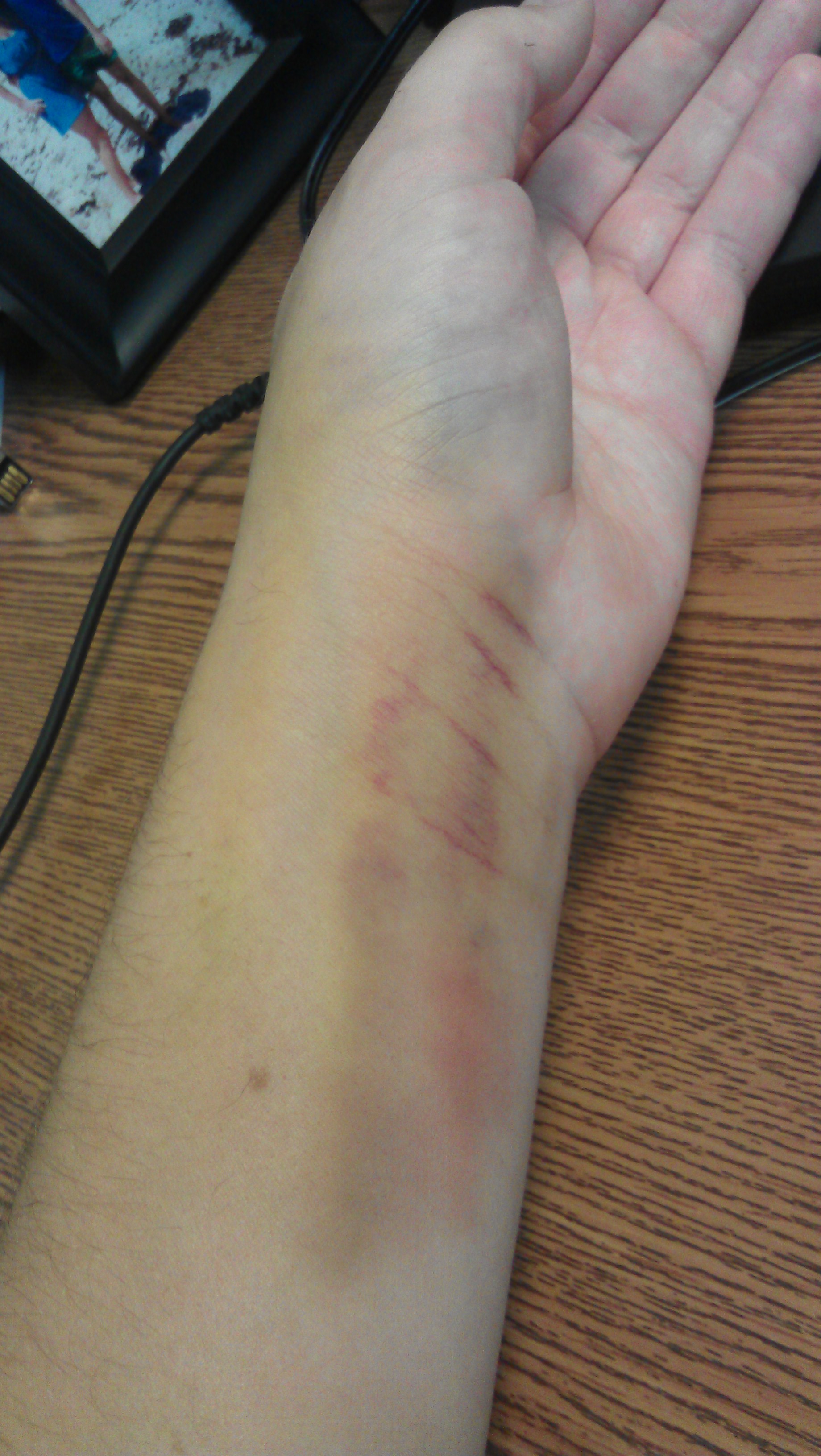
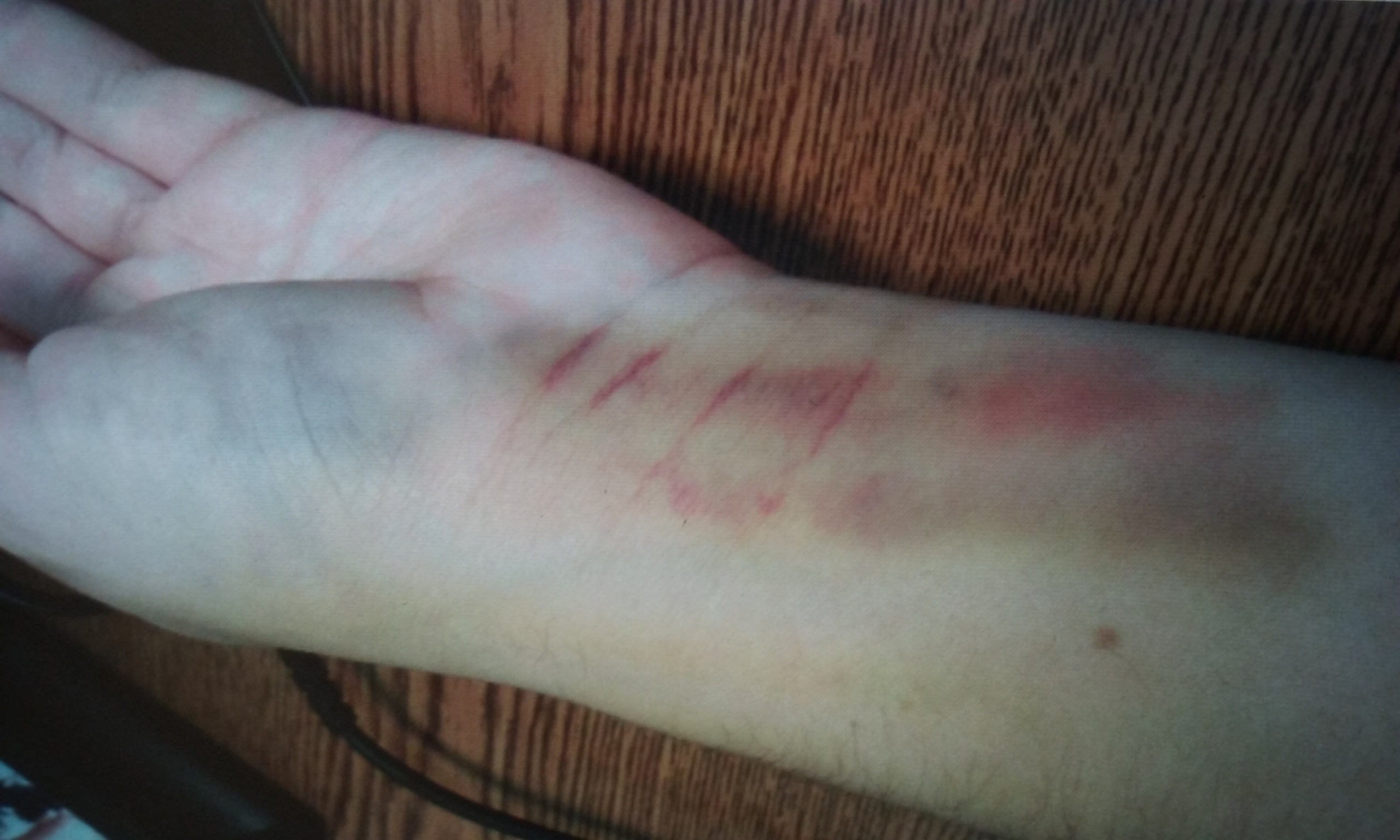
20 minutes elapsed and the wrist couldn't move in a lateral direction without major pain. I called a 24 hour clinic and was seen right away for an X-ray. A 24 hour clinic isn't an ideal place to get a diagnose since they don't employ degreed doctors, but rather a pool of physician assistants. I'm not saying that they do a bad job, but you will increase your odds of a proper diagnosis by seeing an orthopedic facility that specializes in bone fractures. Anyways, I had the X-ray done and the diagnoses was "no fracture" and to go home and rest on it. I was 100% convinced that I broke a bone since the pain was immense and it didn't feel like a bruise, but I was relieved to hear that it wasn't. I bought a velcro brace and it helped immobilize the wrist, especially during bedtime when my wrist would go limp and cause pain.
Improper Initial Diagnosis
Here is the first X-ray image. I will come to find out that there is actually a hairline fracture of the scaphoid, but the X-ray machine took too blurry of images for a proper diagnoses to be made. I placed arrows onto the original images with an arrow indicating the scaphoid. If you look closely, you should see a faint line cutting across the scaphoid:
First appointment with first orthopedic surgeon
3 weeks pass and my wrist is still in pain from doing basic exercises. Push-ups are impossible since any perpendicular force place onto the wrist causes large pain. Lateral movements (think waving your hand left-to-right) were also impossible. At this point I realize that the wrist will never fully heal. The bruising has subsided completely. I book a consultation with an orthopedic and he discards the above X-rays due to their quality. An MRI is issued and shows a distal-pole fracture of the scaphoid with a close to 0% chance of union (non-union). The "distal pole" refers to the part of the scaphoid that is furthest away from the distal radius bone.
Here you can see the abrupt breakage of the scaphoid in two pieces on the upper extremity. I took two images here since the MRI takes multiple snaps of the Z-axis.
This is a 3D view of the bones. I circled in red the distal-pole that has broken away. There is 0% chance of a union of the two bone structures.
If left untreated, the body would attempt to combine the two pieces with cartilage which would produce a non-intended joint. I was given two options:
-
Remove the distal-pole portion and live a pain-free lifestyle. I wasn't told exactly what my range of motion (ROM) would be, but I'm going to assume bad since the scaphoid is a critical bone that acts as a hinge by pushing between other bones to create lateral motion. I didn't like this idea. If I was 90 years old and didn't play sports then maybe I'd go with this route.
-
Use K-wire and attempt to combine the two bones back together. I liked this idea, but the surgeon's confidence was low and he didn't recommend this solution.
In summary, I learned that I did fracture the scaphoid and that I'd need surgery. I was going to find another surgeon.
Second Surgeon
I liked my second surgeon, Dr. Spencer J. Stanbury, MD. He was going to use a typical cortical screw to bring the two bones close enough together and then stuff a bone graft, taken from my distal radius, inbetween the two bones in hopes of the body repairing the damage. Long story short, this worked!
Surgery Day
The surgery date was set for Feb 21st 2016. Below shows me in the post-op room. I was just happy that is was finally done.
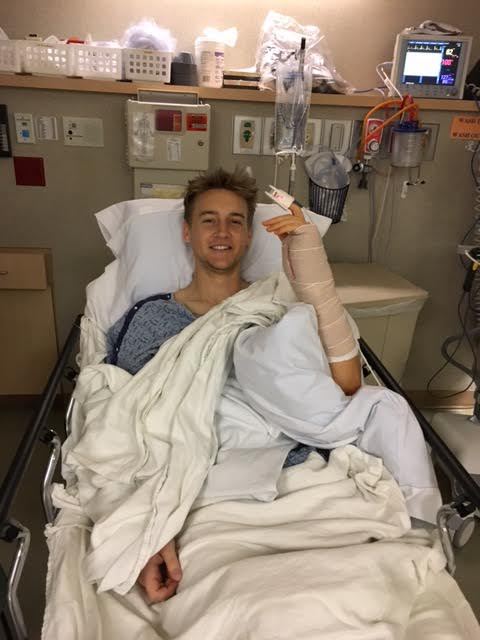
I was placed in a temporary cast immediately following surgery. I took 2x 5MG of oxycodone for the first 2 nights because the throbbing pain was too much for me to go to sleep with. That stuff was great - it would knock me out within 30 minutes. The pain eventually subsided after 5 days. I would occasionally have to raise my arm above head to drain the area of blood. I was placed in a temporary cast as shown:
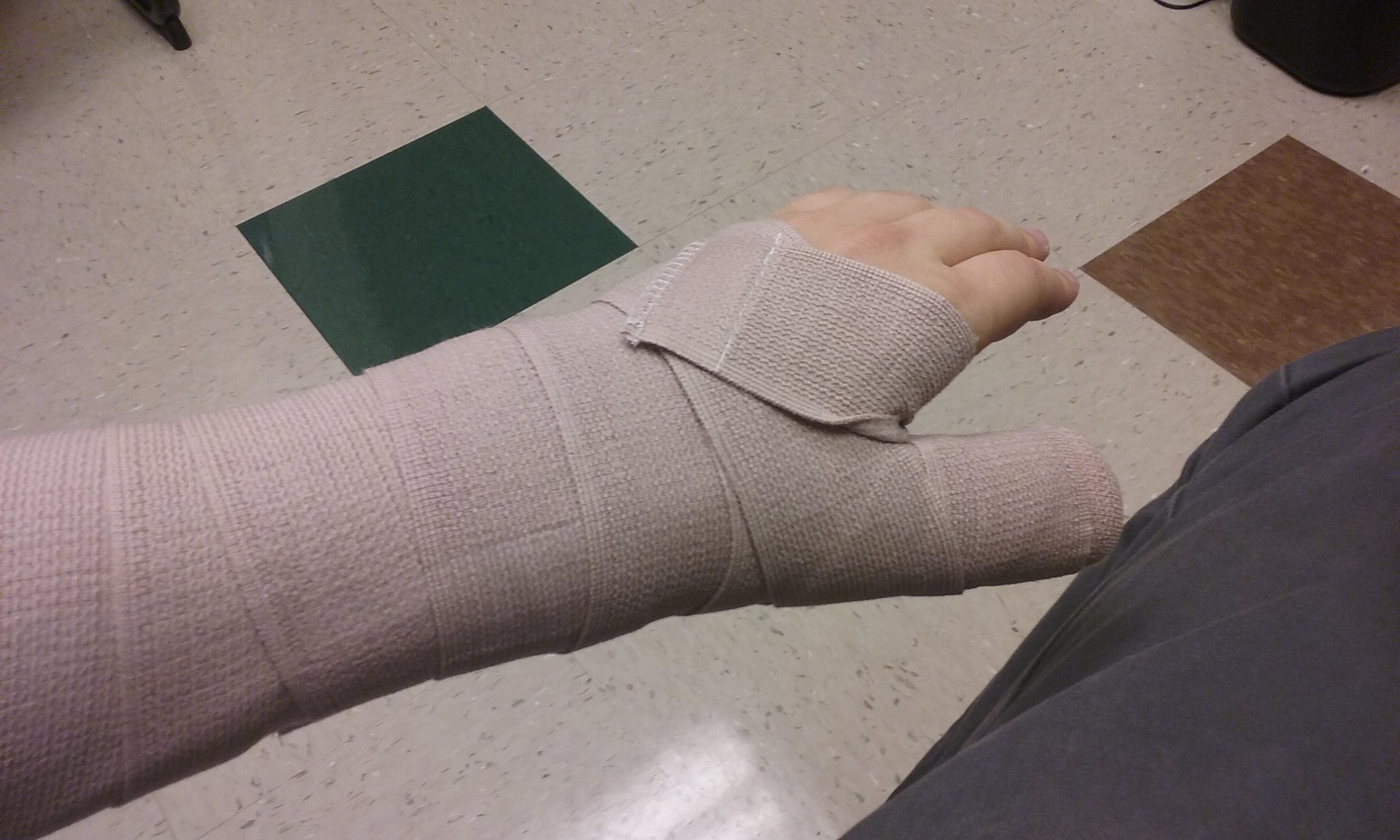
2 Weeks Post Surgery
The temporary cast came off after 2 weeks. Below shows the crazy stiching job. It looks pretty brutal.
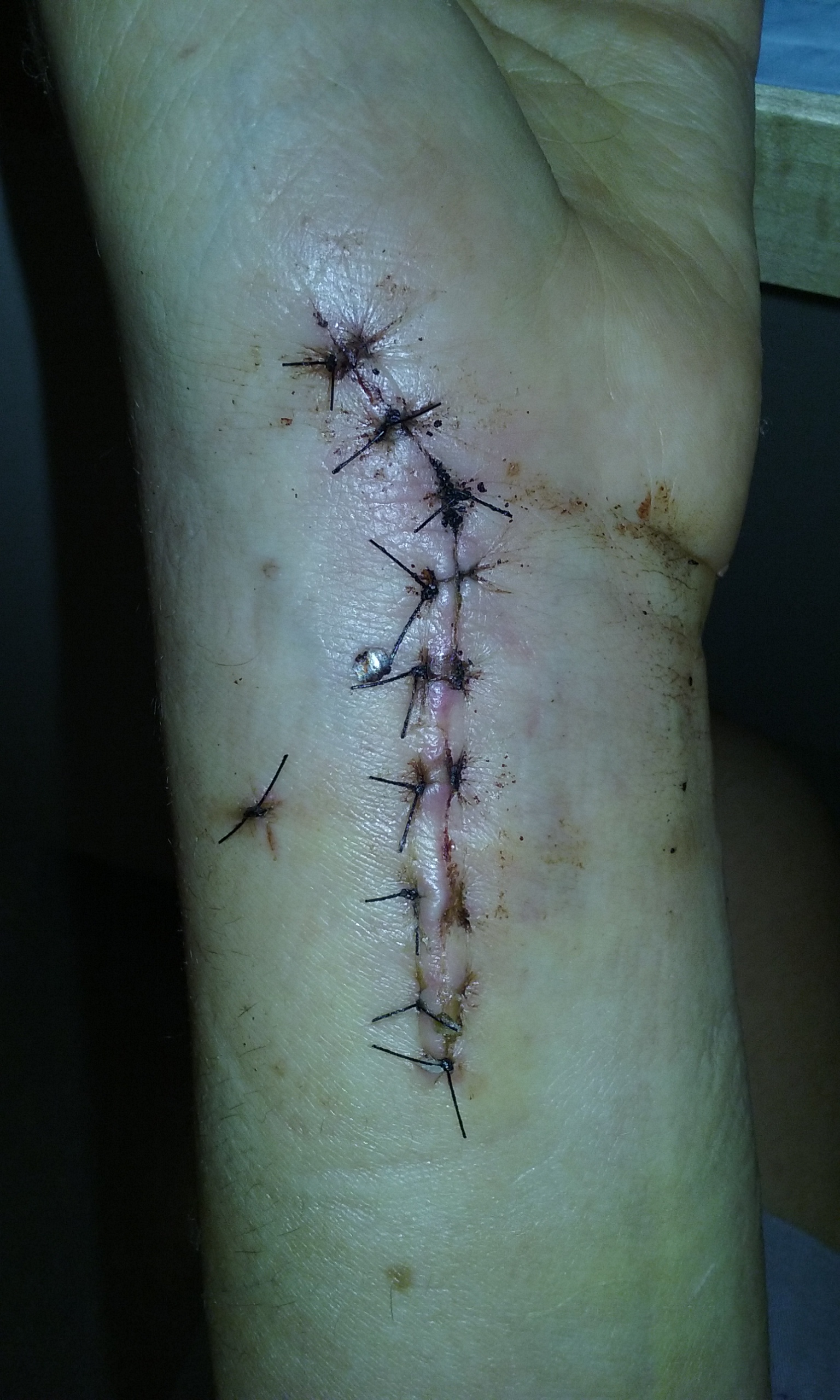
The stitches were then taken out
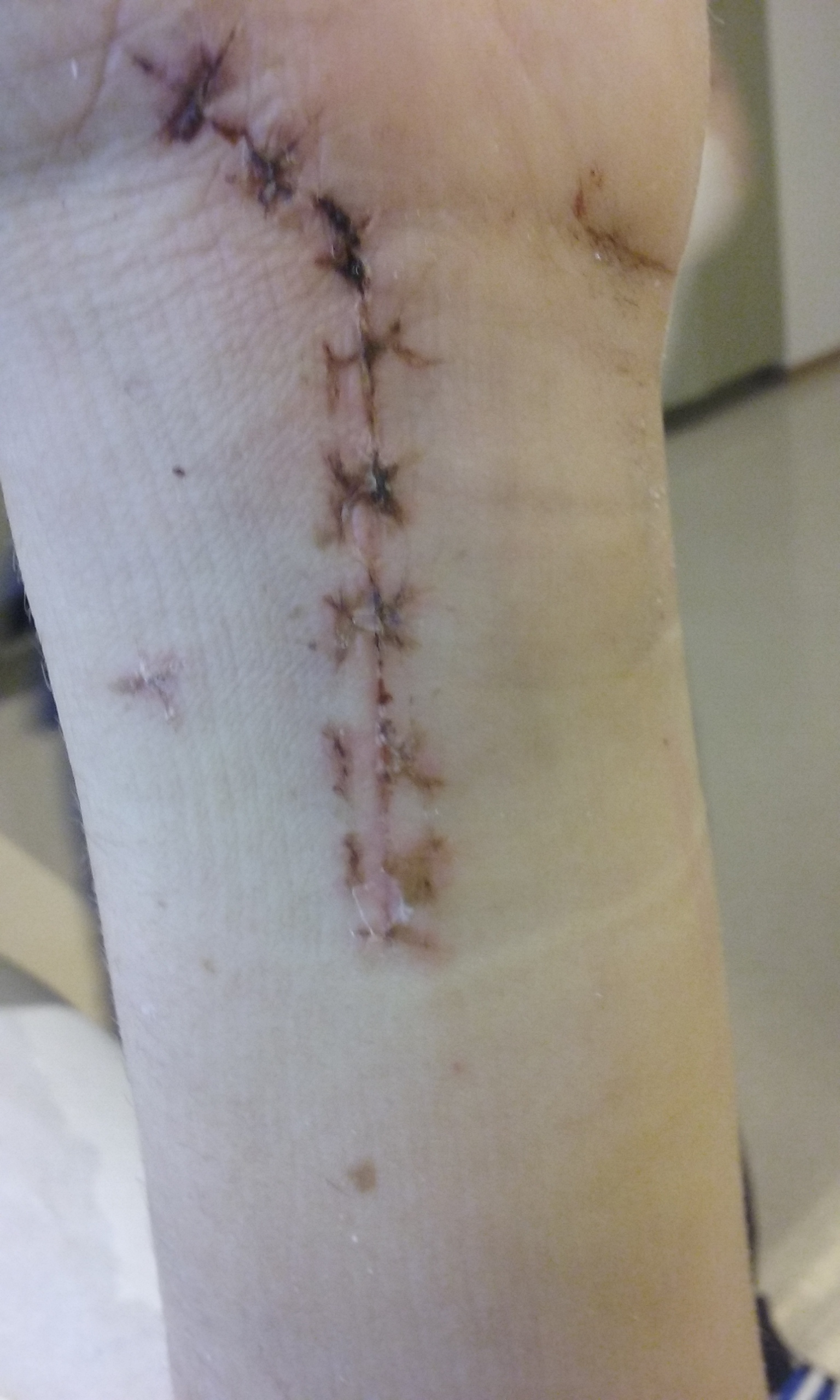
I was given a more permananet carbon fiber cast

I had to go back a few days later to have this refitted since it was too tight. The first night I had this on is when I experienced my first panic attack ever in life due to the sudden realization that I couldn't defend myself readily and my thumb movement was severely limited which inhibited my range of motion.
Below shows the placement of the screw
Palm Up, Front View. Note the square that was cut out to fill the gap in between the two bones.
Lateral View
The DR gave the nod of approval for these images. They look OK to me, but its hard to tell if something is amiss here. The distal radius bone is prone to breaking if I were to handle heavy loads due to the piece of material taken out from its middle section. Overtime, this will fill back in with the proper nutrition.
30-Day Follow-Up
40% healed at this time frame
Palm Up, Front View
Lateral View
60-Day Follow-Up
60% healed at this time frame
This MRI scan was probably the most telling for me. Below you can see a few snapshots of the lateral MRI scan. You can clearly see the screw in various stages as it is angled, causing it to appear more prominent in snapshots at different depths.
This picture just looks cool
Here is the offical jargon that is accompanied to these images:
- ORIF scaphoid fracture, located at the junction of the proximal two thrids, distal one third fracture, status post ORIF, with osscous bridging at apporximately 75-80% of the cross-sectional area with deformity and mild widening. Residual thin 1mm fracture line along the volar ulnar margin. Dorsal radial margin thin ununited fragment, 4x3mm in length, 1mm in diameter, located 1mm dorsal to the midpole cortex; volar ulnar 3x2mm ovoid ununited fragment. -no AVN -no scapholunate widening. -intact hardware -intact triscaphe joint
- Distal radius volar margin osteochondral defect, consistent with prior bone graft donor site
120-Day Follow-Up
80-90% healed at this time frame
I can't tell much by these X-Rays, but apparently all is good
Palm Up, Front View
Lateral View
Cast Removed
I don't have any pictures of the cast removal, but I will say that the cast felt a part of my body. I hardly noticed it after the first 30 days. I still played ultimate Frisbee with my cast and even fell on it a few times. The carbon fiber material created a concrete-like feel of indestructible. My left forearm was smaller than my right, but it was not super noticeable, especially once I started working out again with light weights.
It took me 2 weeks after the cast was removed to get my range of motion to 90% of what it used to be. My strength took a few days to reach 90%.
9 Months Post Surgery
9 months post operation and my range of motion is 95% and my strength feels 100% of my right. I haven't tested this scientifically though. Push-ups still give my left wrist slight pain, but is manageable. My left side of the body feels overall stronger 9 months post surgery. All of my lifts (deadlifts, push-ups, pull-ups, chinups, overhead press, curls, bench press, farmer walks, etc) are back to normal and I don't feel any limit from the screw!
Conclusion
Don't break your wrist!
